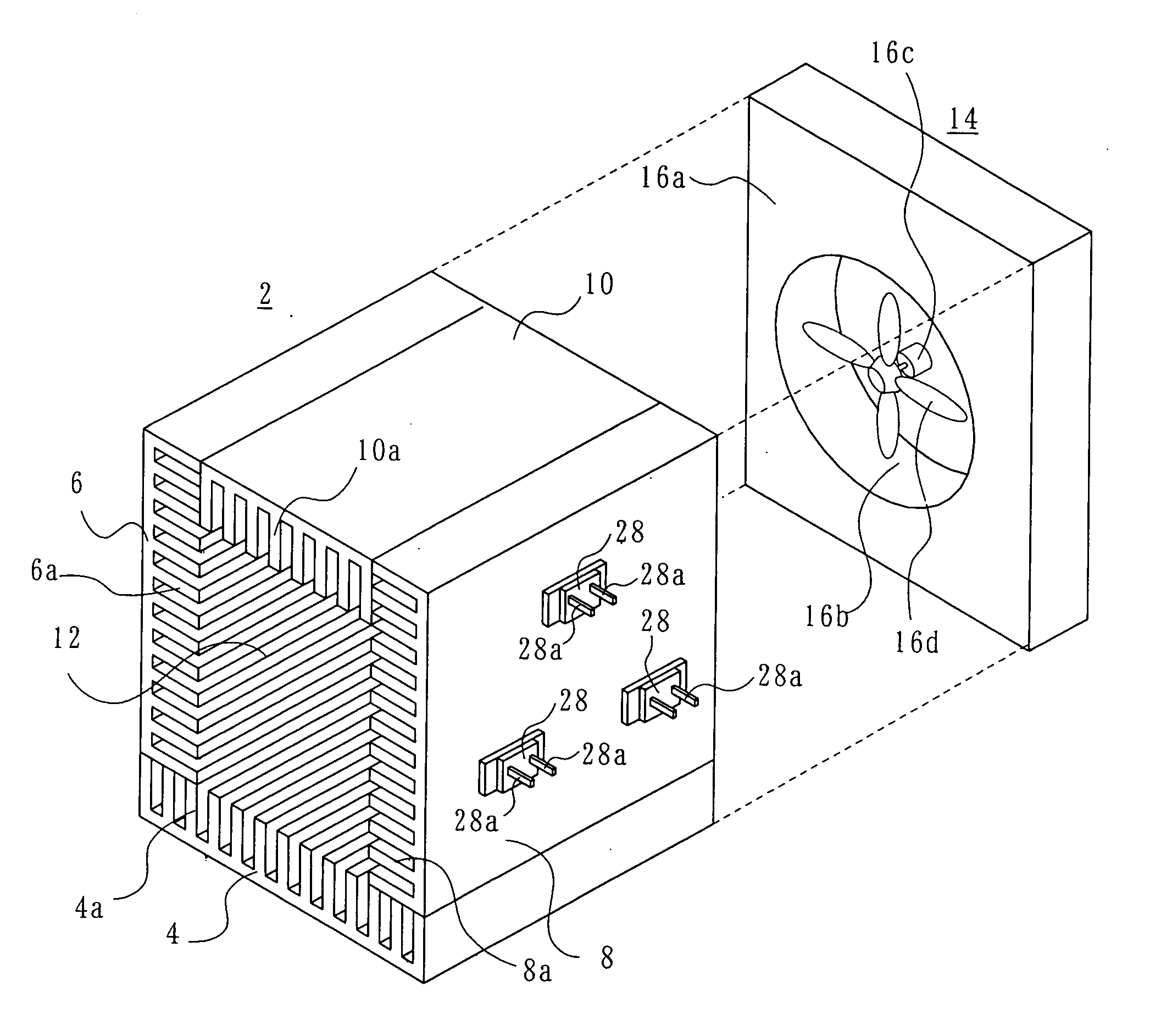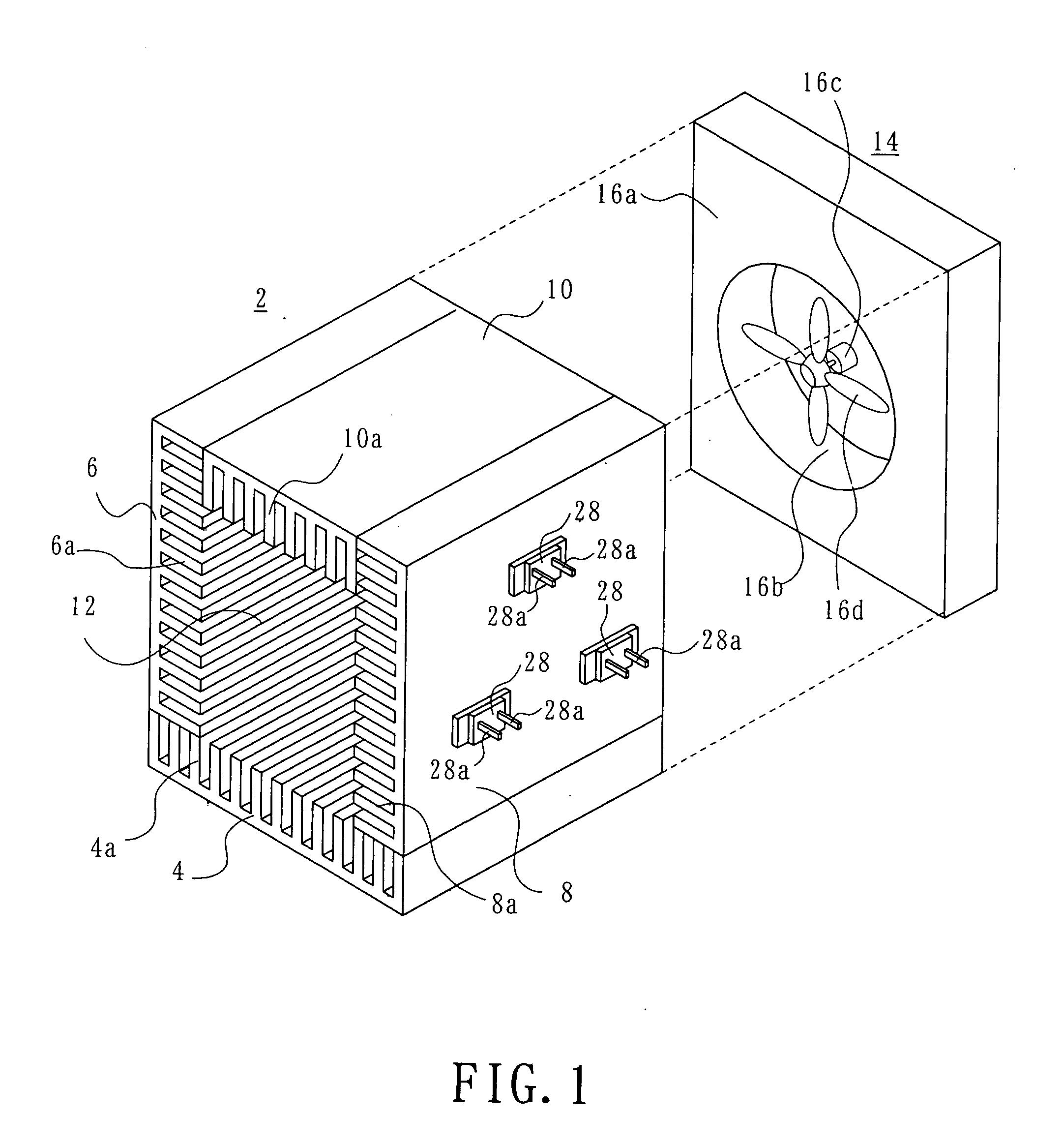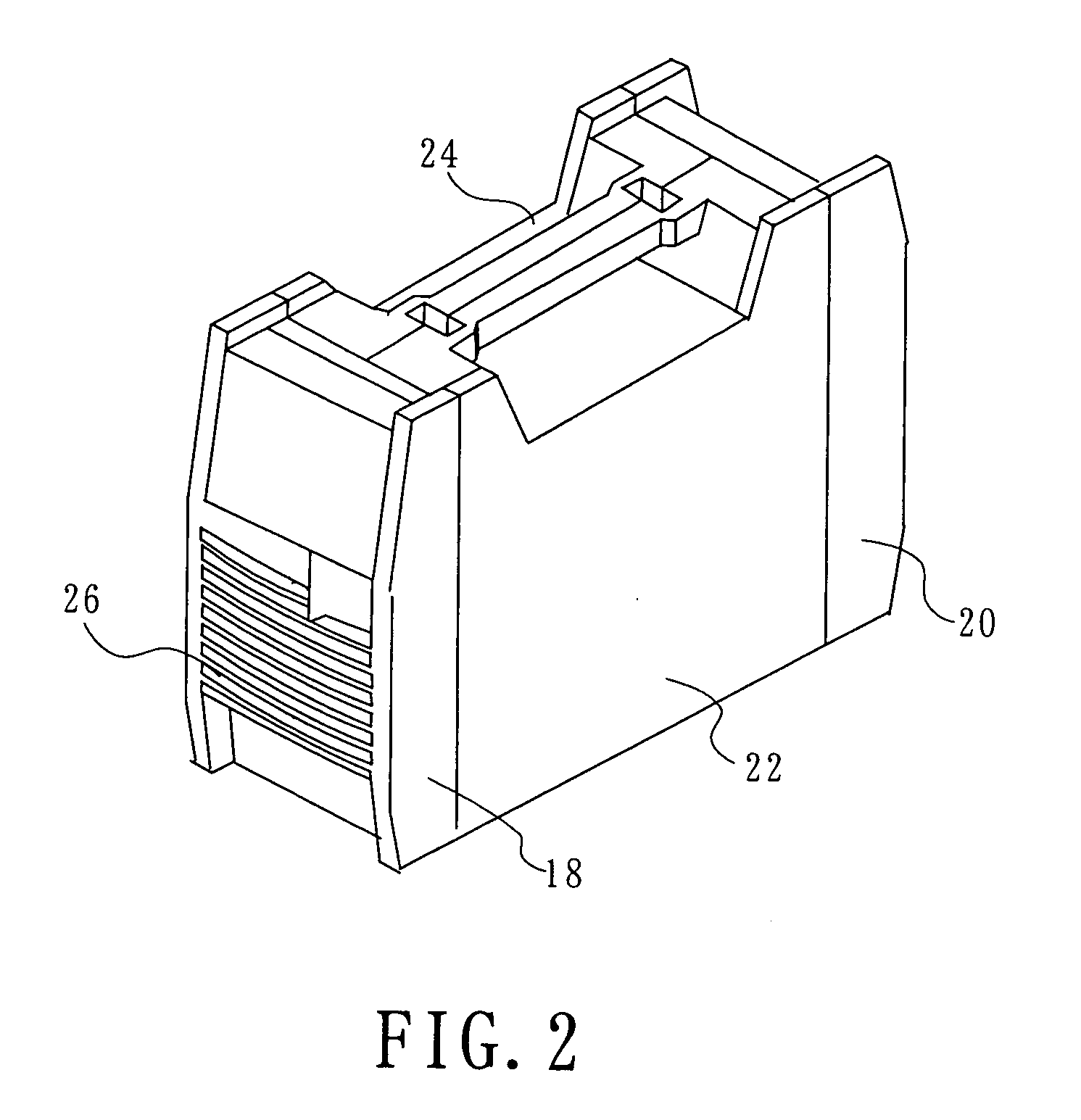Heat-generating component cooling structure
a cooling structure and heat generation technology, applied in the construction details of electrical appliances, basic electric elements, lighting and heating apparatuses, etc., can solve the problems of degrading insulation of semiconductor modules, generating a large amount of heat, and affecting the cooling effect of components
- Summary
- Abstract
- Description
- Claims
- Application Information
AI Technical Summary
Benefits of technology
Problems solved by technology
Method used
Image
Examples
Embodiment Construction
[0013] As shown in FIG. 1, a heat-generating component cooling structure according to a first embodiment includes a hollow heat sink 2. The heat sink 2 includes a plurality of heat conductive material members combined to form a heat sink having a polygonal cross-section. For example, four metal plate members 4, 6, 8 and 10 are disposed perpendicular to each other into a rectangular-parallelepiped-shaped heat sink 2, with adjacent plate members secured to each other by means of any suitable securing members (not shown). The heat sink 2 has a path 12 formed in it, which extends between and opening at two opposed ends, e.g. front and rear end portions. The plate members 4, 6, 8 and 10 have a number of fins 4a, 6a, 8a and 10a, respectively, formed on their surfaces facing the path 12. The respective fins extend in the length direction of the path 12. The metal plate members 4, 6, 8 and 10 may be formed by, for example, drawing aluminum.
[0014] In the rear portion of the heat sink 2, a f...
PUM
 Login to View More
Login to View More Abstract
Description
Claims
Application Information
 Login to View More
Login to View More - R&D
- Intellectual Property
- Life Sciences
- Materials
- Tech Scout
- Unparalleled Data Quality
- Higher Quality Content
- 60% Fewer Hallucinations
Browse by: Latest US Patents, China's latest patents, Technical Efficacy Thesaurus, Application Domain, Technology Topic, Popular Technical Reports.
© 2025 PatSnap. All rights reserved.Legal|Privacy policy|Modern Slavery Act Transparency Statement|Sitemap|About US| Contact US: help@patsnap.com



